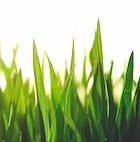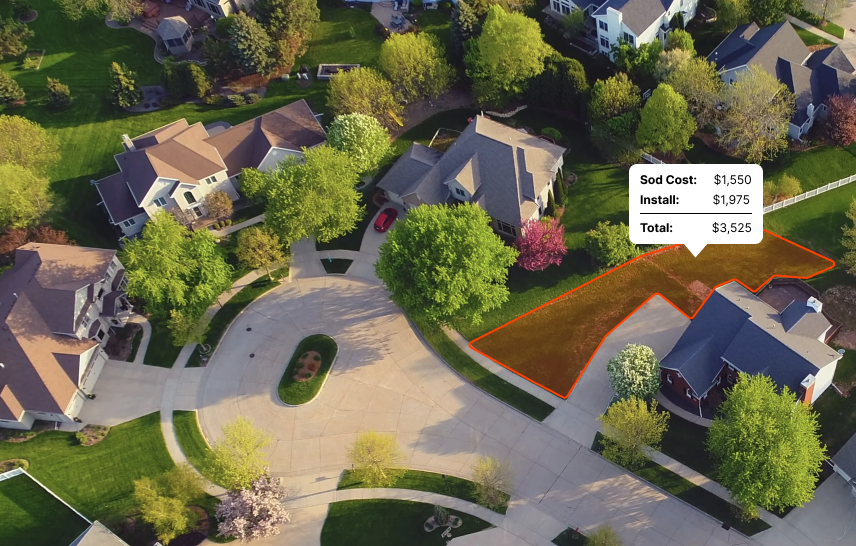Bottom line? If you want your Florida lawn to flourish, select a grass type that's in sync with the state's warm and humid climate.”
Introduction
Basking in a humid subtropical climate, Florida is warm and humid almost year-round. This weather pattern has a direct impact on the best types of grass for the state, with some varieties flourishing under these balmy, damp conditions, while others struggle.
If you're planning to lay grass in Florida, set your sights on the growing season, typically spanning from late spring to early fall. This period blesses us with warm, moist soil, laying the groundwork for strong grass roots.
Steer clear of winter months, though, as the cooler climate can slow grass growth and leave it more prone to disease. Dubbed the "warm-season grass zone," Florida's grass scene is ruled by varieties that have adapted to its hot temperatures and high humidity.
These grass types often boast a deep root system, their secret weapon against drought periods. They also tend to hit a growth spurt during warmer months, while possibly taking a nap during the cooler ones.
What are the best sod types for FL?
In the world of landscaping, not all grasses are created equal. Each thrives in a specific climate zone: cool, warm, or transition.
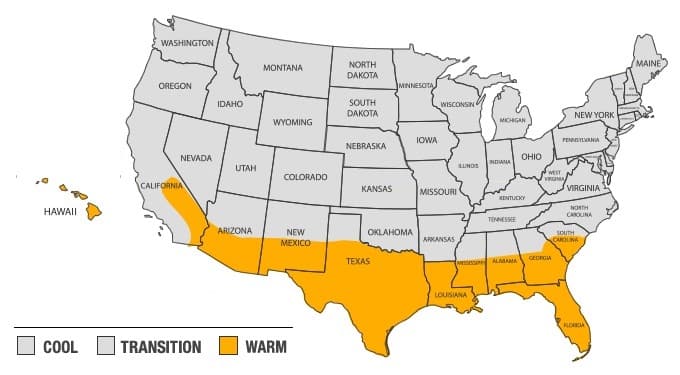
Florida, with its warm season climate, prefers a particular set of grasses that relish the higher temperatures. The following sods are the easiest to grow and maintain in Florida:
While it's possible to grow grasses meant for other regions with proper care, attention and timing, these are the most common grasses in Florida for residential lawns.
Level Up Your Lawn Skills
Once per week we'll send you an interview from someone who has mastered the art of lawn care.
Recommended species for shade
Shady spots in Florida yards can be a bit tricky. The scorching sun is hard to escape, but some grasses pack a punch and stand up well even under those big old trees. One such hero is the ever-reliable St. Augustine Grass. This cool-season grass loves shade and generally requires about 4 hours of dappled sunlight a day. Take note, though - it's a thirsty champ and needs good irrigation to thrive.
Onto Zoysia grass, a true game changer. This grass laughs in the face of shade. It's versatile, it's sturdy, and only needs about 3 hours of sun exposure per day. Zoysia's tight growth pattern makes it an excellent defense line against weeds. But remember, friends, it's a slow grower. Don’t expect a lush lawn overnight.
Then we have Seville St. Augustine, a sub-species with a flair for drama. It's a dark, sleek green with a blade about ¼” wide. Love a garden with character? This is your pick. Seville doesn't demand much sun and 2-3 hours are typically enough. Now, it's not as salt tolerant as other species. Avoid planting it if your yard is too close to the ocean.
Our last contender is Centipede grass. Picture a grass that’s low-maintenance, grows slowly and loves the shade. Here’s Centipede for you! With a bit of diligent watering and about 5 hours of sunlight, this grass will make a cool carpet for your lawn. But beware: centipede grass can be a diva with its soil pH needs. It prefers the pH to be between 4.5 to 6.0. Any more, any less, and you've got a volt-face on your hands.
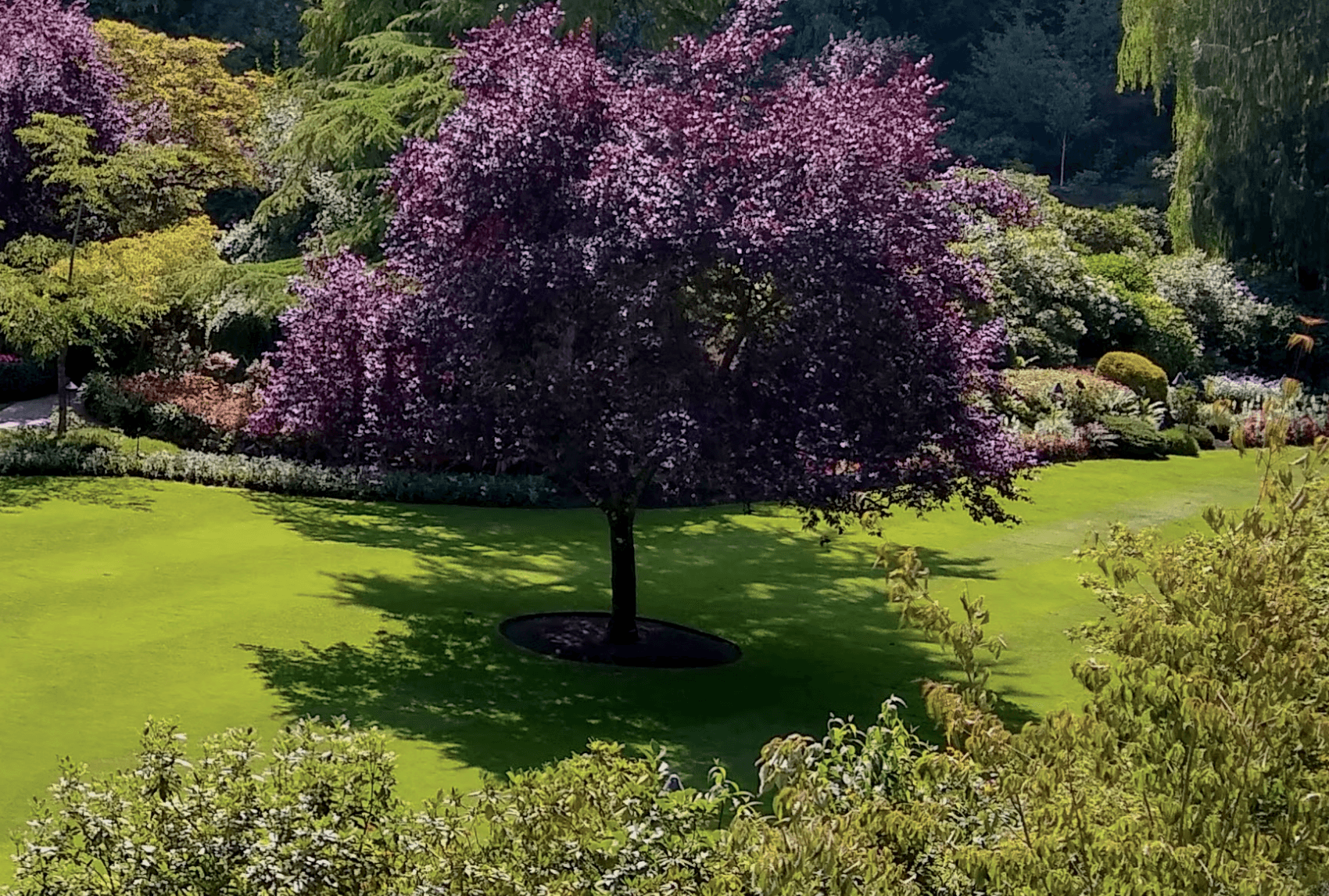
Recommended for full sun or partial sun
Choosing the right sod for your lawn depends heavily on the sunlight exposure in your yard. Different grass types have varying light requirements for optimal growth and appearance. Assessing whether your lawn receives full or partial sun is essential in selecting sod that will flourish and stay healthy in your specific environment.
Below are some sod options recommended for either full sun or partial sun conditions in FL:
| Grass Type | Sun | Good to Know |
|---|---|---|
| Bermuda | Full | Bermuda grass thrives in full sun and is known for its drought tolerance and ability to withstand high temperatures. |
| Zoysia | Full | Zoysia grass prefers full sun but can tolerate some shade. It is known for its dense turf and resistance to pests and diseases. |
| St. Augustine | Partial | St. Augustine grass performs well in partial sun and is valued for its ability to establish quickly and provide a thick, green lawn. |
| Bahia | Full | Bahia grass is ideal for full sun and is known for its drought resistance, low maintenance needs, and ability to thrive in sandy soils. |
What varieties stay green year-round?
As with anything agriculture related, there is some nuance to this question. There are many grasses that can stay green year round in but it depends heavily on your location within Florida as well as any microclimates that may exist.
The following grasses have the ability to stay green year round in Florida:
| Grass Type | Caveats |
|---|---|
| Bermuda | It typically goes dormant and turns brown after a few hard frosts in the fall and stays that way until temperatures consistently hit the 60s in the spring. |
| Zoysia | It can stay green nearly year-round in milder climates without severe winter freezes or overly high summer temperatures. |
| St. Augustine | It can stay green almost year round, but will go dormant and turn brown during cool-season months in colder regions. |
| Bahia | It tends to stay green throughout warm weather but may go dormant and brown in cooler weather or during periods of drought. |
What is the best time to lay sod in Florida?
In a warm-season location, lay sod in late spring or early summer. This timing is ideal as the warmer temperatures and longer days will promote quick root establishment and growth. Avoid laying sod in the cooler months as the grass will likely enter dormancy, slowing down the root establishment process. So, for success, stick to late spring or early summer when it's 75 to 90 degrees out.
As you can see in the image below, you'll notice the most shoot growth (the grass above ground) and root growth during the summer for warm season grasses:
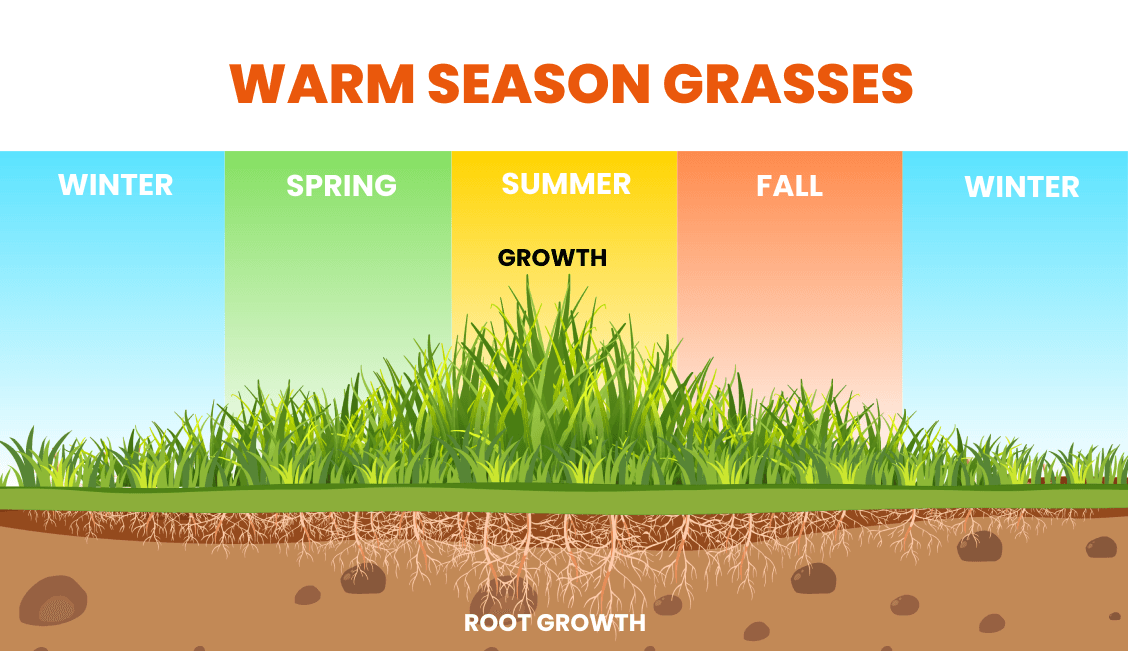
Find reputable companies for installing sod in FL
Here are the top problems you'll face when trying to get sod installed by a landscaping company:
- They're not transparent about pricing. You'll often get a quote that's way higher than you'd expect.
- They're hard to get ahold of on the phone or you'll reach out online but won't hear back.
- It's hard to pin them down for a specific date. Because you can only bring sod from the farm when there's decent weather, this causes some delays at times. It also has a short shelf life, so it's important to get it installed within a day or two of delivery.
We've done all the work for you. Click below to get a quote from one of the top installers in Florida.
